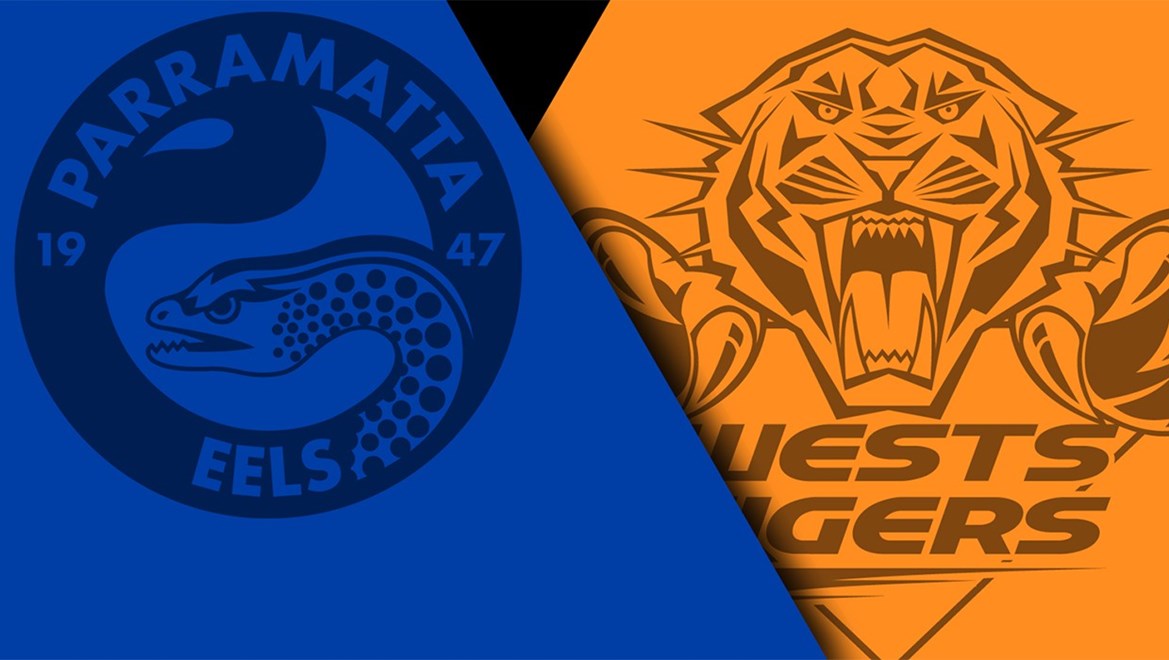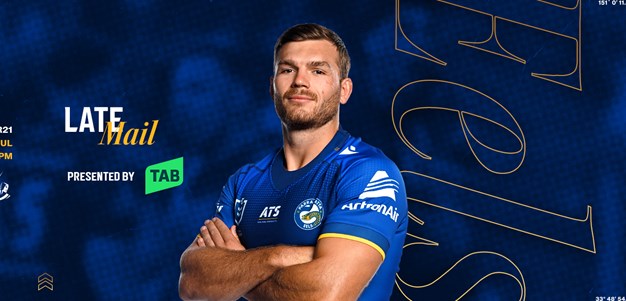

Each week NEIL CADIGAN will look back on some of the most eventful games and most famous names in the club’s 70-year history and bring them back to life.
The Parramatta Tigers?
It seems unimaginable now but the rugby league was a crazy place in the 1990s when the Super League had split, and damaged, the game and the newly formed National Rugby League was left to mop up the damage in 1998.
After the ‘Super League’ war between the Australian Rugby League and News Limited had raged through a bitter, costly, court-bound collision through 1995 to the end of 1997, one thing was clear – the 11 Sydney clubs could not survive.
All were looking at their businesses, as none seemed immune to mergers, voluntary or forced, nor be absolutely sure of making the ‘criteria’ that would determine which of the 22 teams that played in the two competitions in 1997 would make the cut for the planned 14-team league of 2000.
So, the Parramatta Eels looked closely, very closely, at becoming the Parramatta Tigers or even the Parramatta (or West Sydney) Panthers in joint ventures with Balmain or Penrith.
As early as 1997 the Eels board, encouraged by CEO Denis Fitzgerald who believed only four or five Sydney clubs could survive long-term, discussed with Penrith power-brokers about creating a super-force in Sydney’s west, reaching from Rydalmere to Emu Plains.
The first public admission that the Eels were looking at combining with the Tigers came in July 1997 when the CEO of the Australian Rugby League, Neil Whittaker, a former Tigers chairman, instigated discussions.
Balmain knew they were vulnerable to the conditions the NRL had put forward - that only the top 14 ranking clubs under the criteria formula that including on-field performance, sponsorship and gate income, home and away crowds (from 1995 to 1998, not inclusive of 1997 when there were split competitions), financial capabilities and leagues club funding would be retained.
Of the 12 ARL clubs and 10 Super League clubs of 1997, News Ltd-owned Hunter Mariners and Perth Reds and ARL-funded South Queensland Crushers were sacrificed but Melbourne Storm were introduced, leaving 20 teams in 1998.
By 2000, six more had to be culled.
It was likely a maximum of six or seven would come from the 11 Sydney clubs – Parramatta, Penrith, Canterbury, Cronulla, Manly, North Sydney, South Sydney, Sydney Roosters, St George, Balmain and Western Suburbs. A grant of $3 million for each club that merged was on offer, on top of the usual league annual grants.
Parramatta were perceived as being safe, in the strongest five Sydney clubs despite some poor seasons on the field, however the board felt the Eel was not a marketable club icon and a merger with another club would increase supporter base and gate receipts, sponsorship and junior numbers plus ease the reliance on leagues club funding.
The cost of running the football club had increased by $7.8 million from 1994 to $12.4 million in ‘98 and the leagues club grant to the football sky-rocketing from $1.8 million to $6.15 million.
Despite the expected opposition from fans, directors held a public information meeting in July 1999 to showcase their proposal, although directors Sid Kelly and John Gollan were opposed to any merger.
The proposal was for a team called the Parramatta Tigers, wearing blue, black and gold, playing exclusively at Parramatta Stadium. It was estimated the merger would bring an extra $500,000 in sponsorship and $650,00- in gate takings annually; Balmain and Parramatta leagues club would provide matching annual grants and Fitzgerald would stand aside as football CEO and concentrate on leagues club business but Brian Smith would remain as coach.
It was declared there would be a $21 million benefit from merging with the Tigers. Negotiations reached a point where chairmen and CEOs of both clubs (Denis Fitzgerald–Alan Overton and Danny Munk–John Chalk) had agreed on terms and were ready to go to their boards for rubber stamping.
It turned out that strong opposition from several former Balmain legends and influential supporters stopped the move in its tracks and within weeks the Tigers had announced a merger with Western Suburbs to become the Wests Tigers.
They had seen that they would be a very junior partner with the Eels, and a merger with the Magpies would allow games to continue at Leichhardt Oval as well as Campbelltown (the irony was that Balmain played the 1995-96 seasons out of Parramatta Stadium as they struggled with their identity and poor facilities at Leichhardt which underwent urgent remedial work).
As a safeguard, the Eels management re-opened talks with the Penrith with Panthers supremo Roger Cowan keen to play ball, knowing his club was no certainty to make the final 14 for 2000 after poor years with crowds and performance.
Ultimately, a well-publicised public campaign led by former politician and influential club supporter Ron Mulock thwarted any great progress and the western city clubs were left to their own devices.
When the criteria rankings were revealed in October 1999 and the make-up of the 14-team future competition announced, Penrith were the bottom club on the list of those who survived but well clear of North Sydney and South Sydney who were cut.
St George and Illawarra had been the first clubs to see the light and merge (in 1998 for the ’99 season) while 1999 wooden spooners Wests and third-last placed Balmain had already agreed to a joint venture, meaning only 12 stand-alone clubs were considered to remain in 2000.
Norths, who had planned to move to the Central Coast in 1999 but delays in building a new stadium forced the Bears to spend the season on the road (playing some games in Brisbane), entered a uneasy shogun wedding with Manly, who were under great financial pressure and finished just above Penrith on the criteria rankings.
The Northern Eagles, who played games out of Brookvale and Gosford, lasted only three seasons (2000-2002) before Manly retained the licence.
The Rabbitohs were reinstated in 2002 after massive protests and Federal Court success and incredibly grew to have the biggest membership, arguably the strongest corporate base of all Sydney clubs and won a premiership in 2014.
FOOTNOTE: The irony is that Balmain Leagues Club was sold in 2009 with $22 million of debts and remains a rundown unused building.







